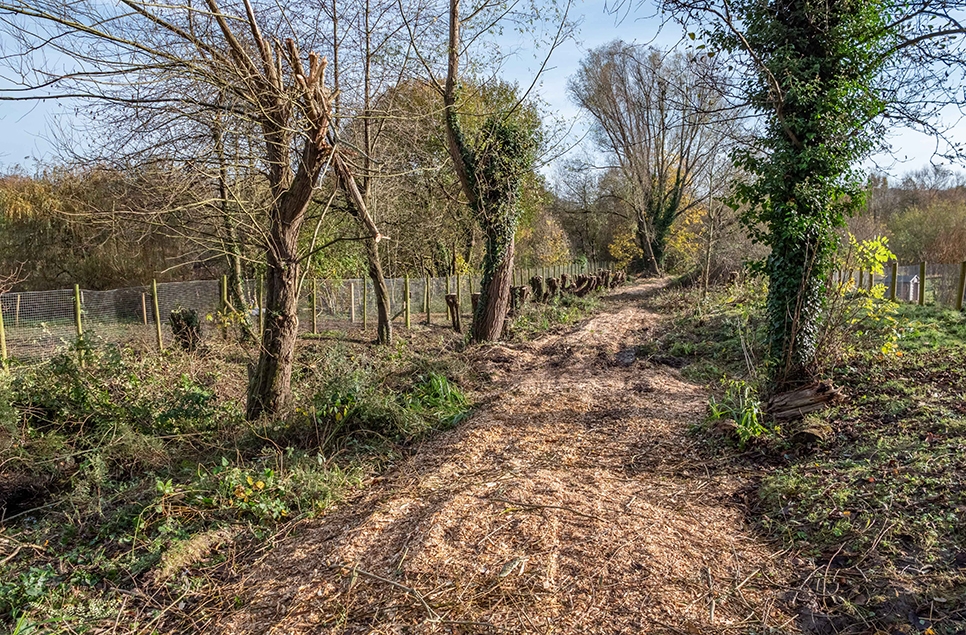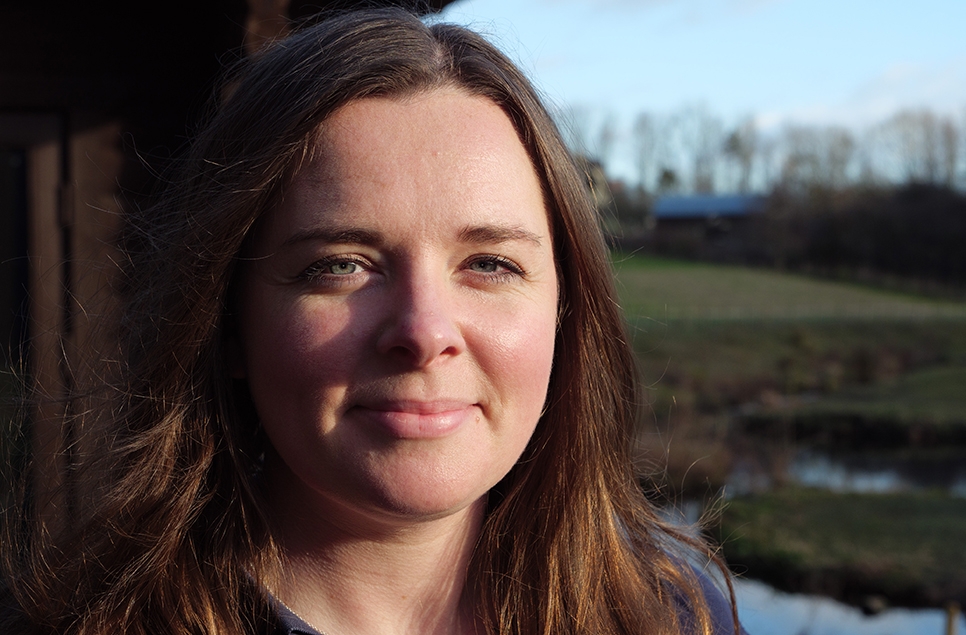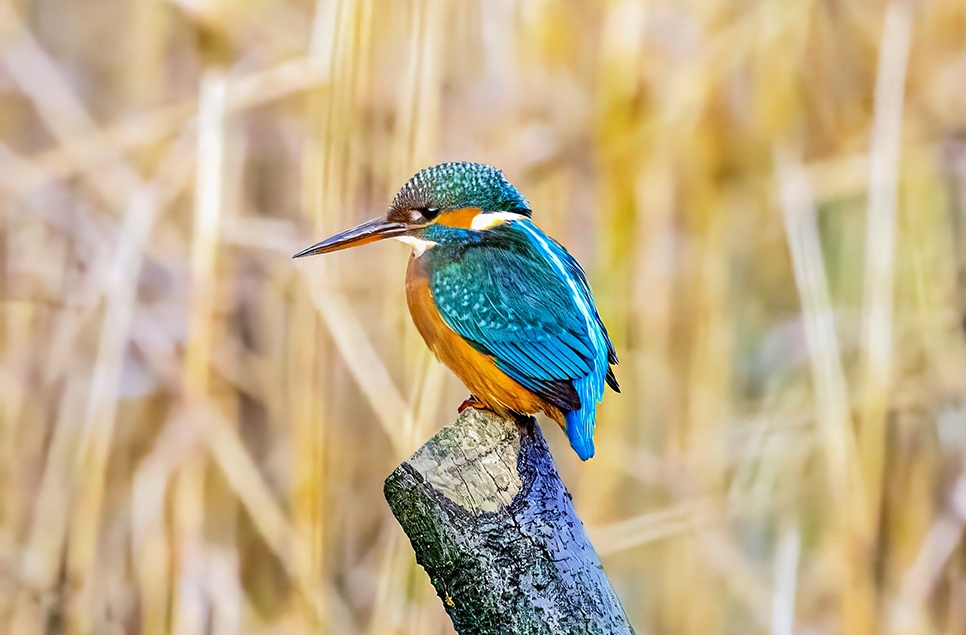Five go off on an adventure (video)!
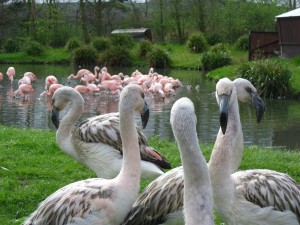
Frankie, Nico, Fran, Phil and Flo – WWT Washington Wetland Centre’s very own famous five flamingo chicks – have embarked on their biggest adventure yet; moving in with their new feathered family after being hand-reared by humans.
Since hatching in September 2012, the Chilean flamingo babies have been given round-the-clock care by their surrogate ‘dad’, aviculture manager Owen Joiner, whose parental duties have included syringe-feeding the chicks every two hours to mimic how an adult flamingo feeds its young.
Now standing at nearly four-feet tall and weighing an average of three-and-a-half kilos, the young birds have been introduced to WWT Washington’s adult Chilean flamingos, as part of a strategy to enhance the flock’s chances of future breeding success.
Watch a video of their moving day here.
Owen said: “In the wild, flamingos nest in large groups, with potentially thousands of birds breeding together. These crowded conditions stimulate natural breeding by giving the birds a sense of stability and confidence.
“Our own flock of 38 Chilean flamingos failed to produce chicks themselves for the fifth season running last year, despite displaying, flirting, mating and nest-building.
“By adding these five new chicks we should give the existing flock a sense of false achievement, which will hopefully give them the confidence to breed successfully, while at the same time increasing the flock size. We hope too of course, that these young birds will breed themselves in a few years’ time.”
The flamingo chicks were transported to the North East from the Wildfowl & Wetlands Trust’s (WWT’s) headquarters in Slimbridge, Gloucestershire, in September 2012, while still inside their eggs.
Because they had been laid so late in the season, it was too risky to allow the flamingos to parent-rear the babies due to colder weather and lack of essential sunlight. So the expert skills and knowledge of Owen were called upon instead, for the difficult but rewarding task of raising the chicks by hand.
“Hand rearing flamingos is a delicate matter”, said Owen. “We had dedicated volunteers and staff covering extra duties so that I could commit myself to their round-the-clock care.
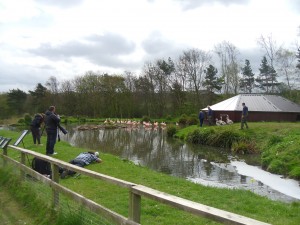
“Flamingo parents feed their young with a type of rich saliva, full of all the goodness needed for the chicks to develop. Here, I mimicked that by syringe-feeding them every two-three hours with a blended mixture of baby porridge, sardines in oil and egg yolks.
“They also needed regular exercise, precise health checks and growth monitoring, to protect their delicate legs as they grew, in case they became too heavy for them.
“During the winter, lack of sunlight was an issue too, because the chicks need Vitamin D in order to grow and develop properly but can’t be exposed to the cold for too long, so I supervised ‘sunbathing’ sessions for them when the weather was warm enough.
“Thankfully the hard work and perseverance has paid off and all five have grown into strong, healthy birds. They’ve been preparing for the big move by walking the route between the duckery, where they currently live, to our flamingo enclosure on the other side of the grounds. Early signs are that they will integrate well with the adults, as they’ve been unfazed by meeting them so far.
“We then have a student lined up to come and monitor the flock during the summer, before writing up her observations into her BSc thesis. This is a direct follow-on from the work carried out by Emily O’Regan last year, who was recently named the UK’s Young Scientist of the Year for her project http://www.youtube.com/watch?v=fciWKIkqGyw
"My main task will be to ensure that the adults welcome the babies (who are teenagers now, really!) and that the young birds feed, settle and integrate themselves well.”
Graham Clarkson, WWT’s Captive Animal Manager, added: “Chilean flamingos are a near-threatened species and conservation breeding programmes such as this help develop vital staff skills for re-introduction projects for endangered birds.
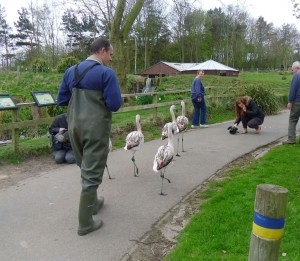
“The skills and techniques developed by breeding captive flamingos can also pay dividends to wild populations. For example, building artificial nest mounds for wild flamingos has been used with great success at sites in Europe and Africa, where tens of thousands of wild flamingos have hatched directly as a result of this technique pioneered in captivity.”
Visitors can see the Chilean flamingo chicks in their new enclosure from Friday 3 May and can hear all about these amazing birds during flamingo talks at 11.15am and 2.45pm, every Saturday and Sunday, from now till Sunday 29 September.
